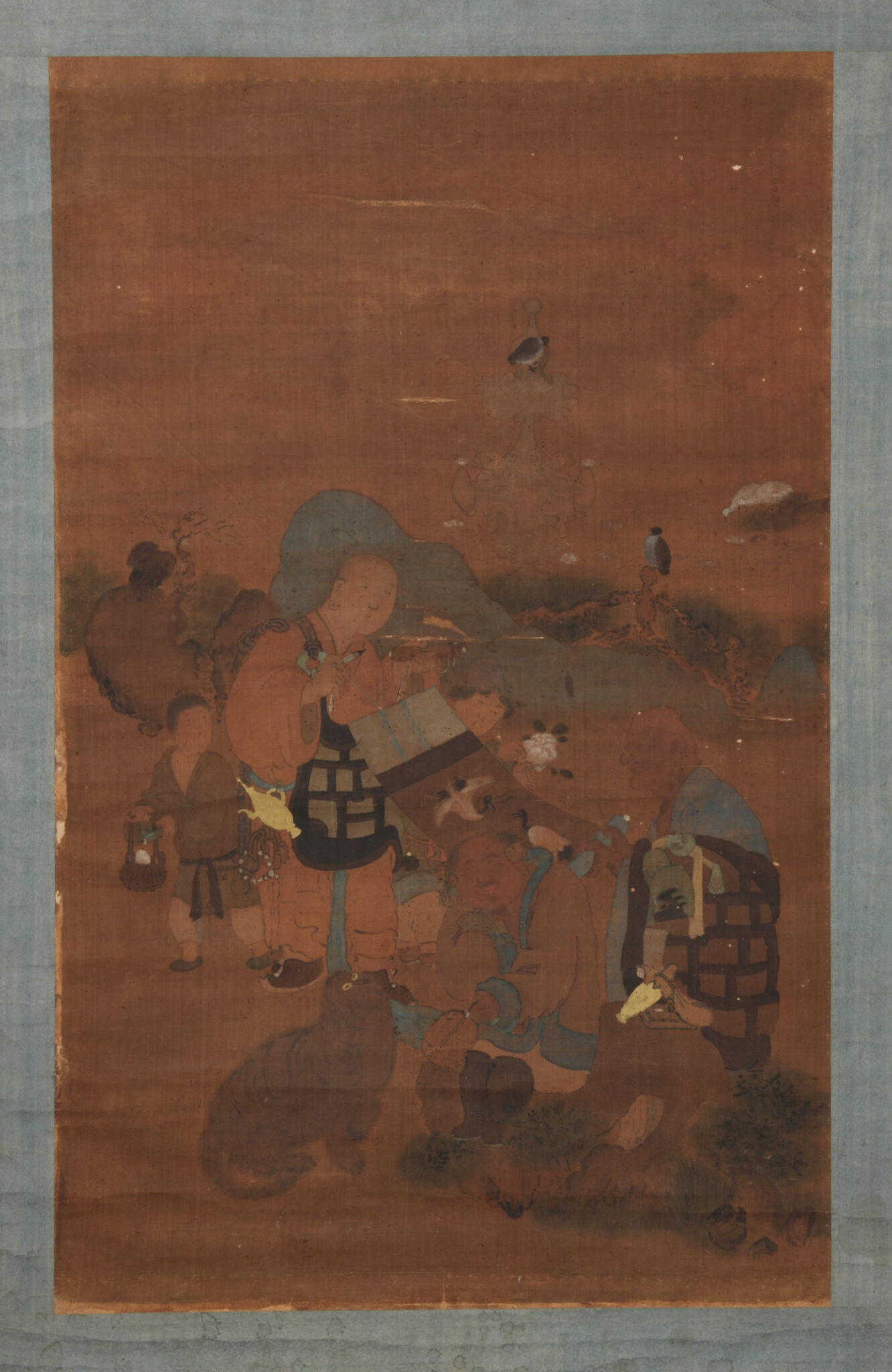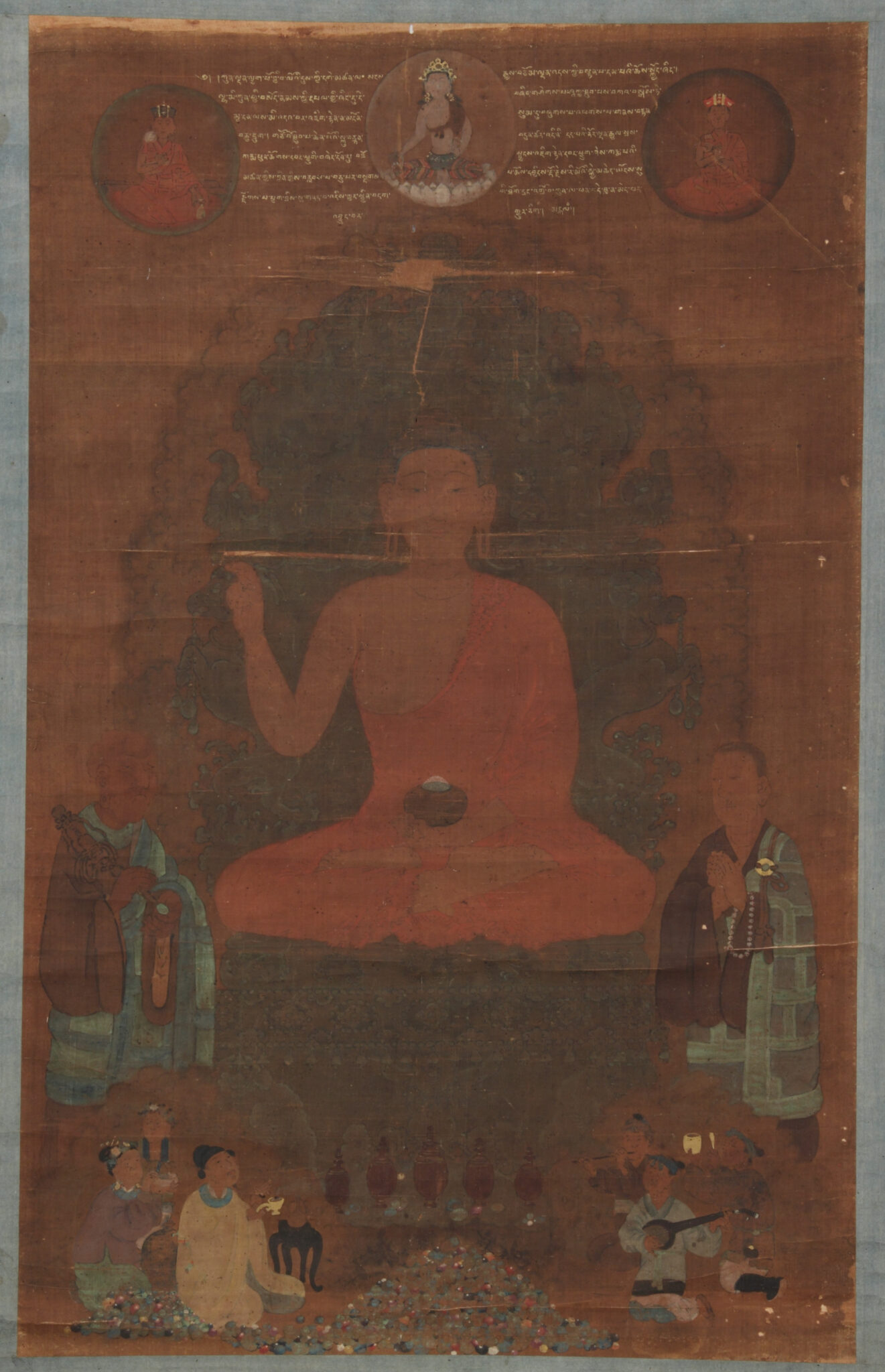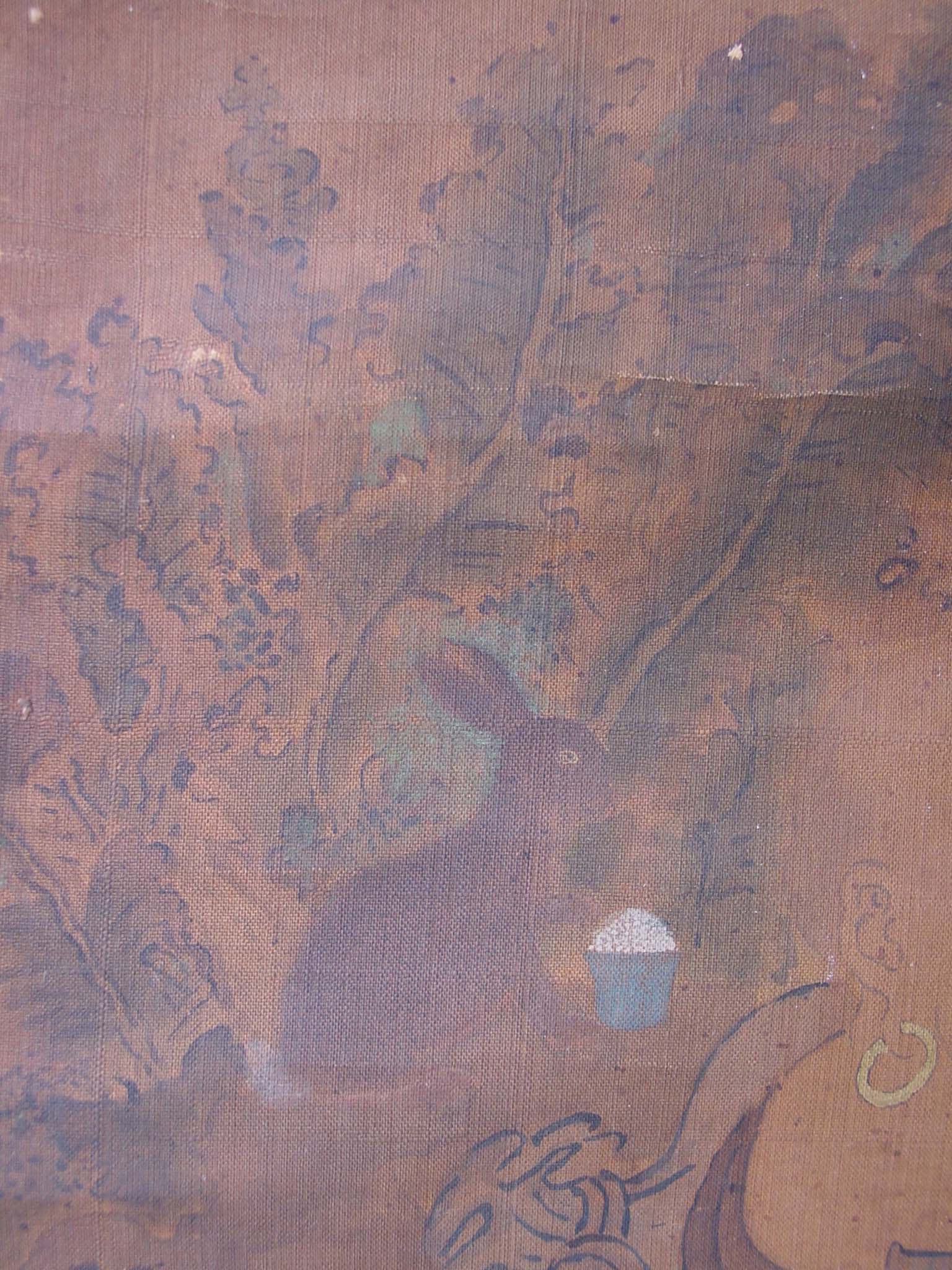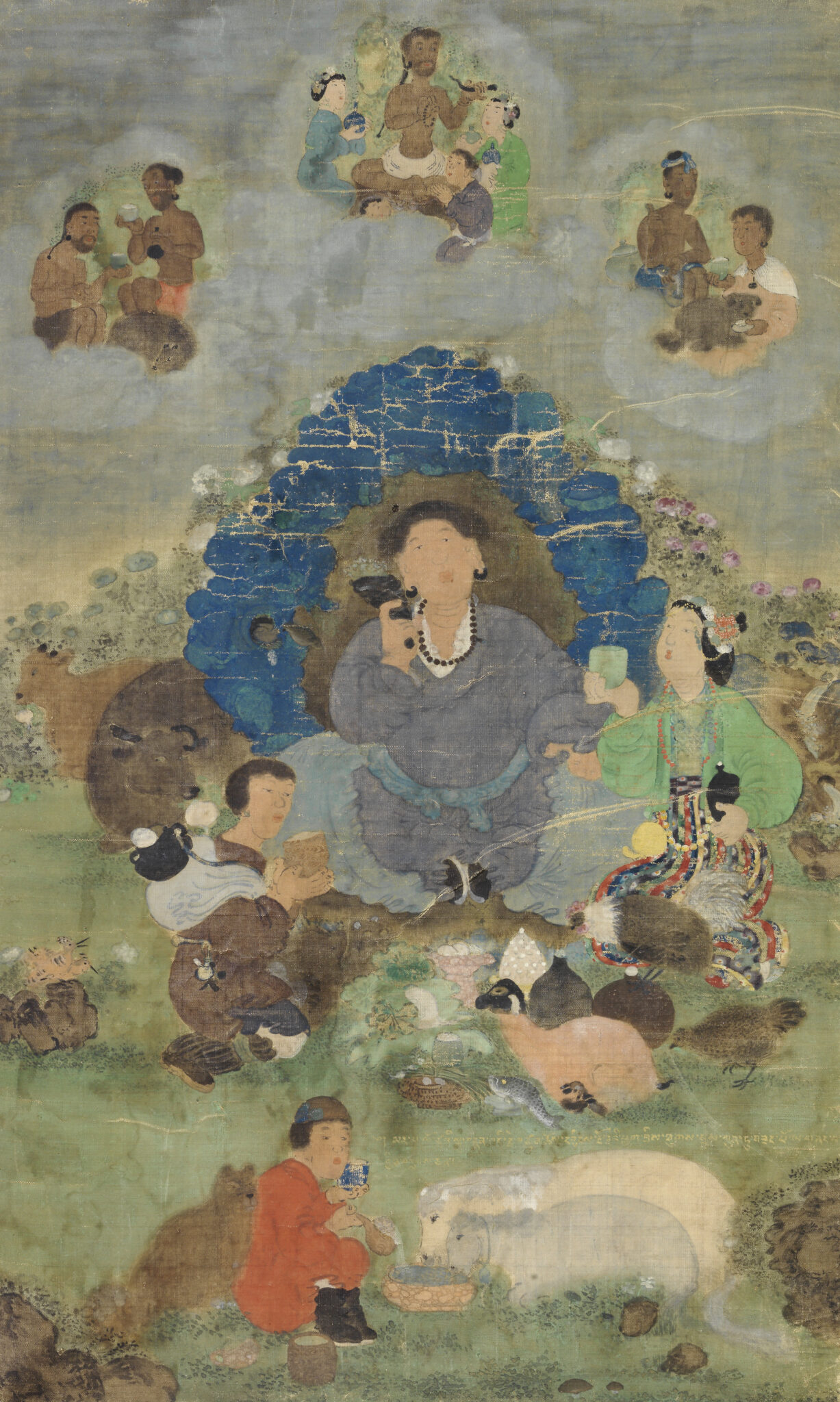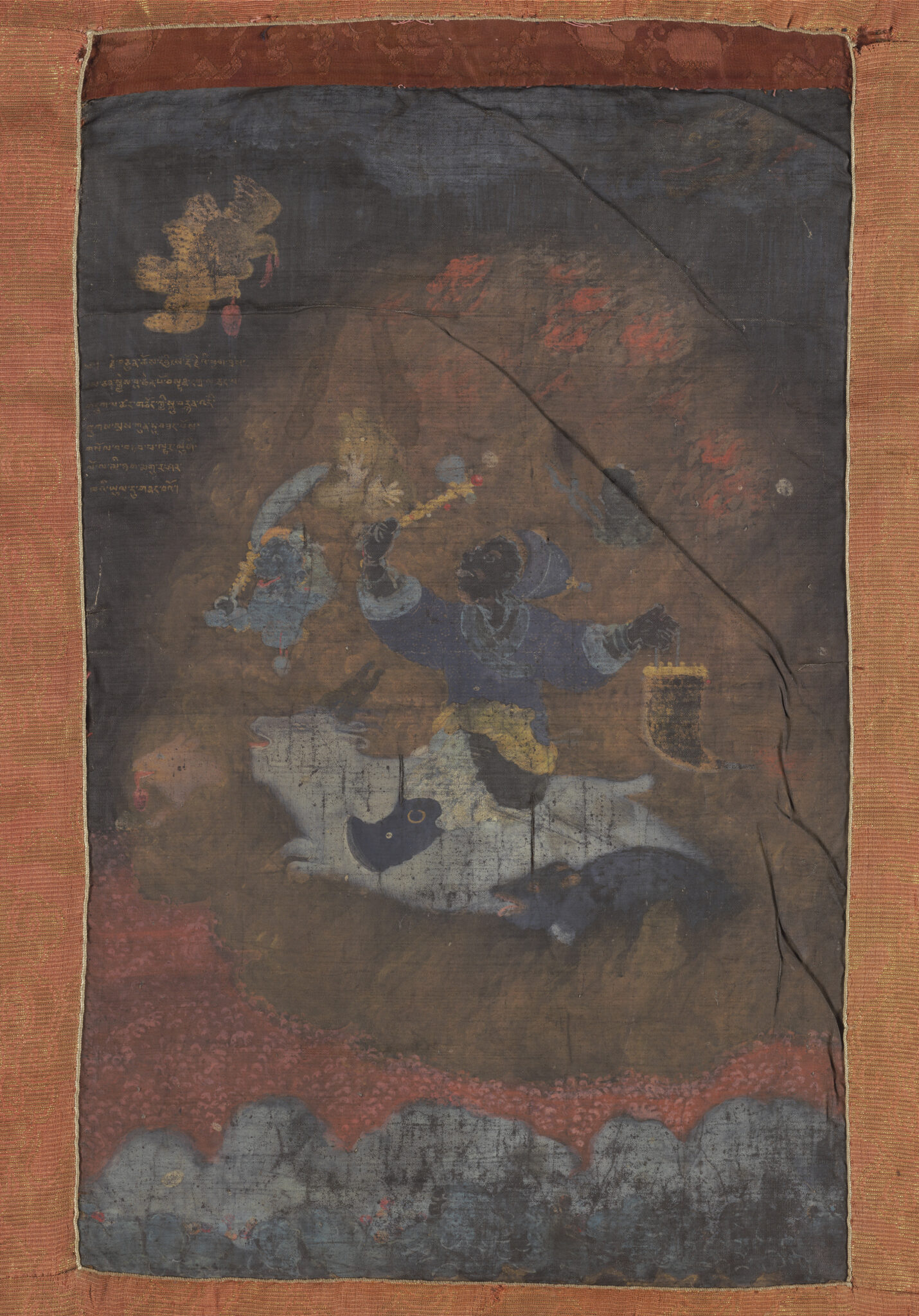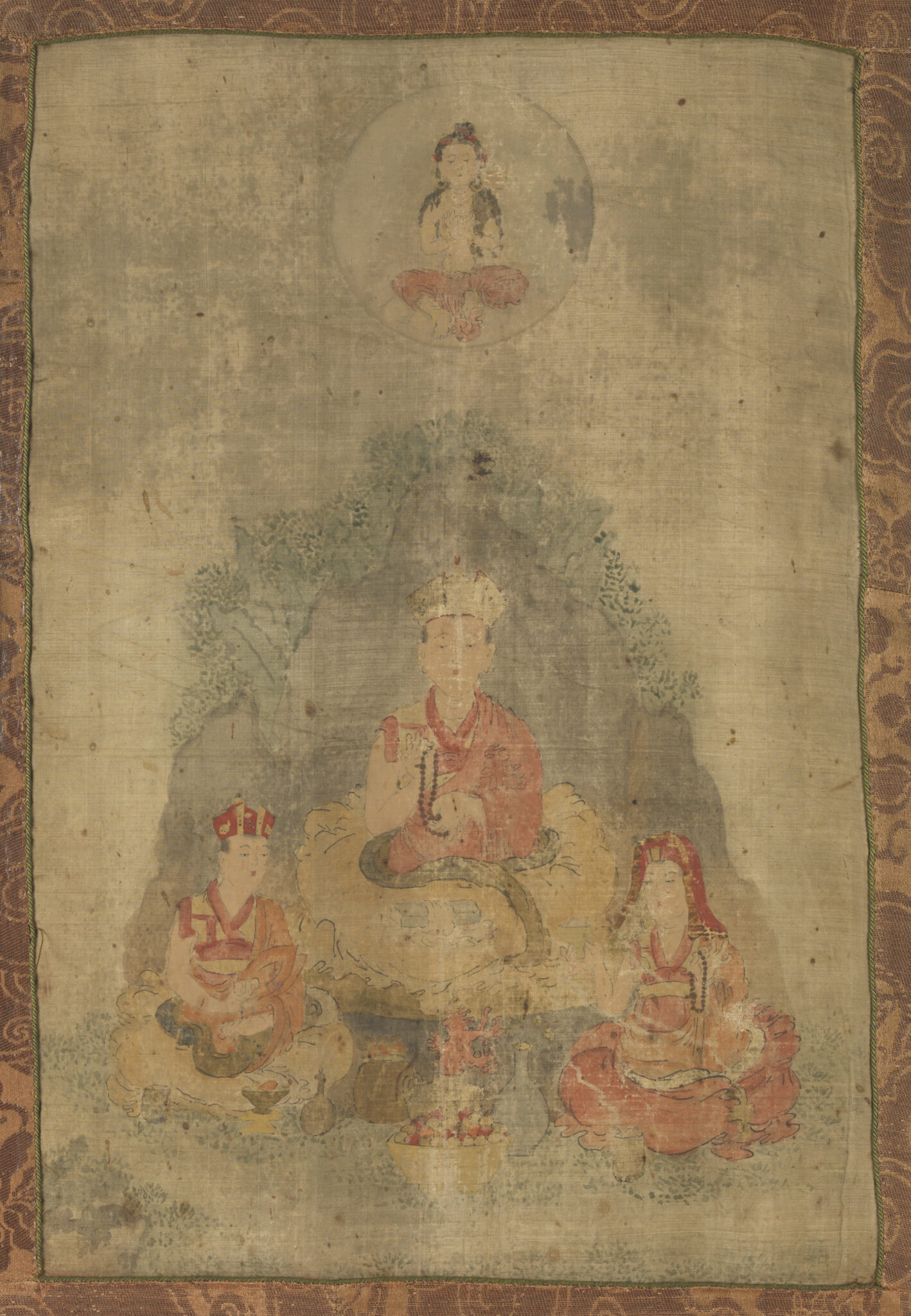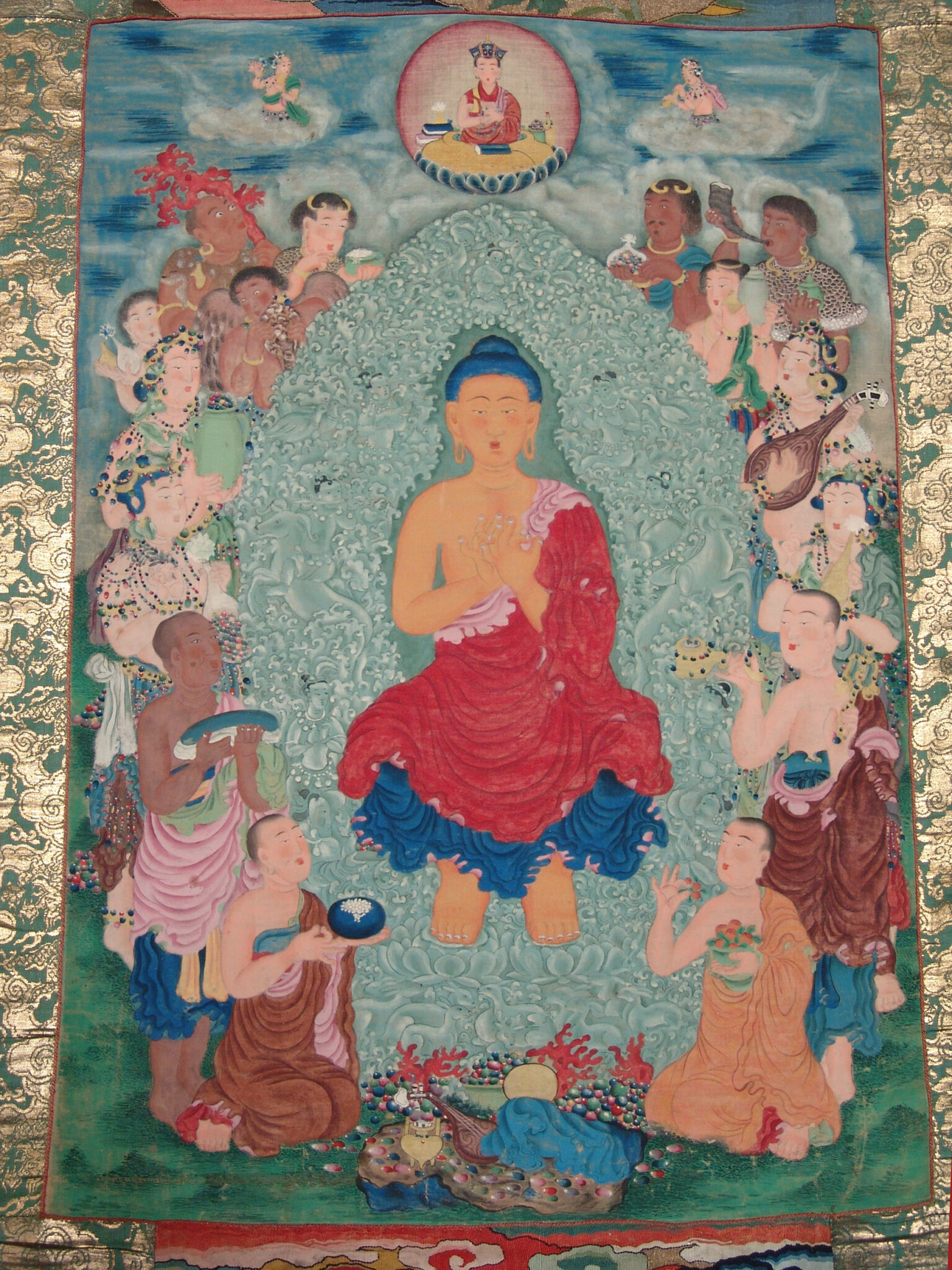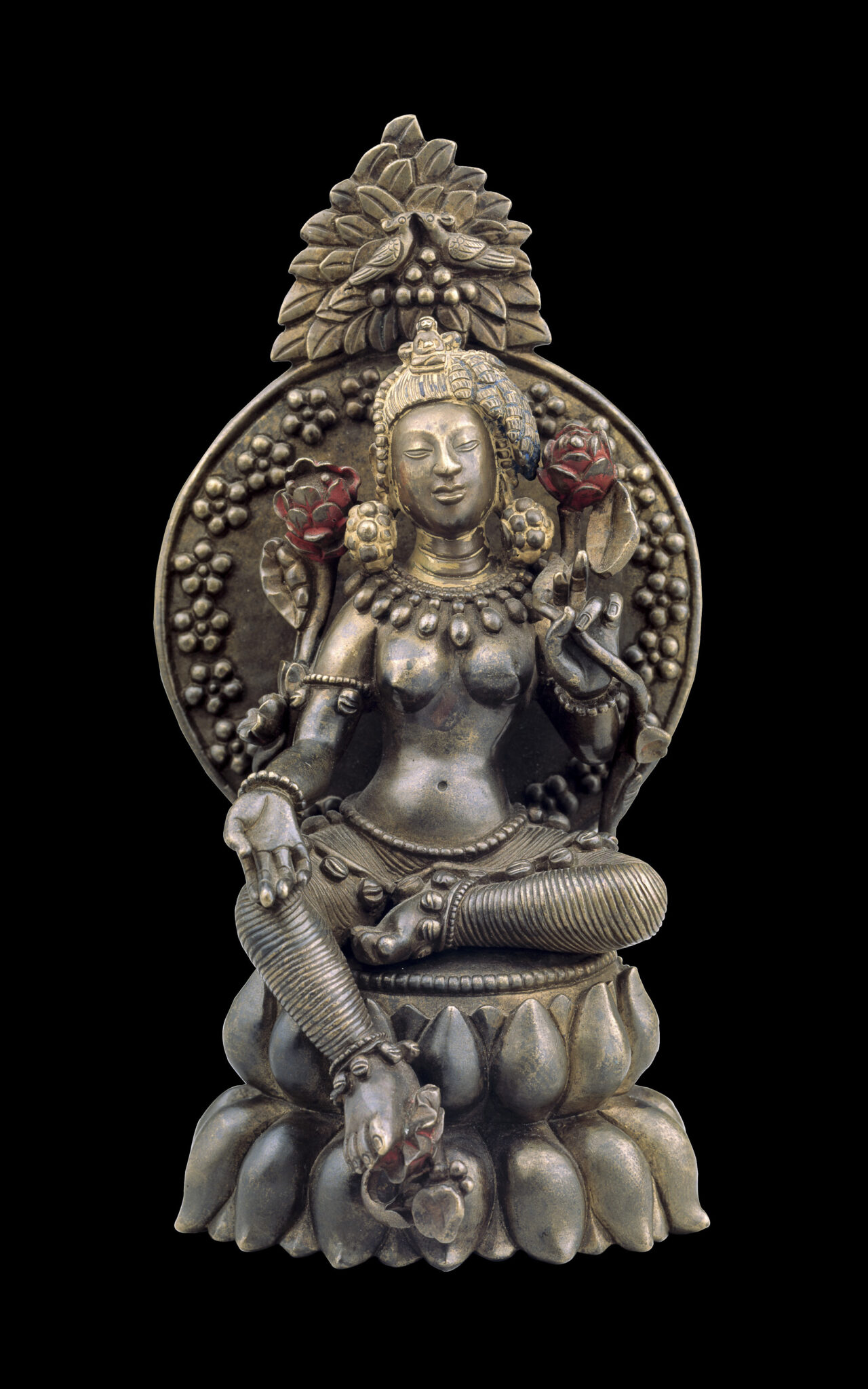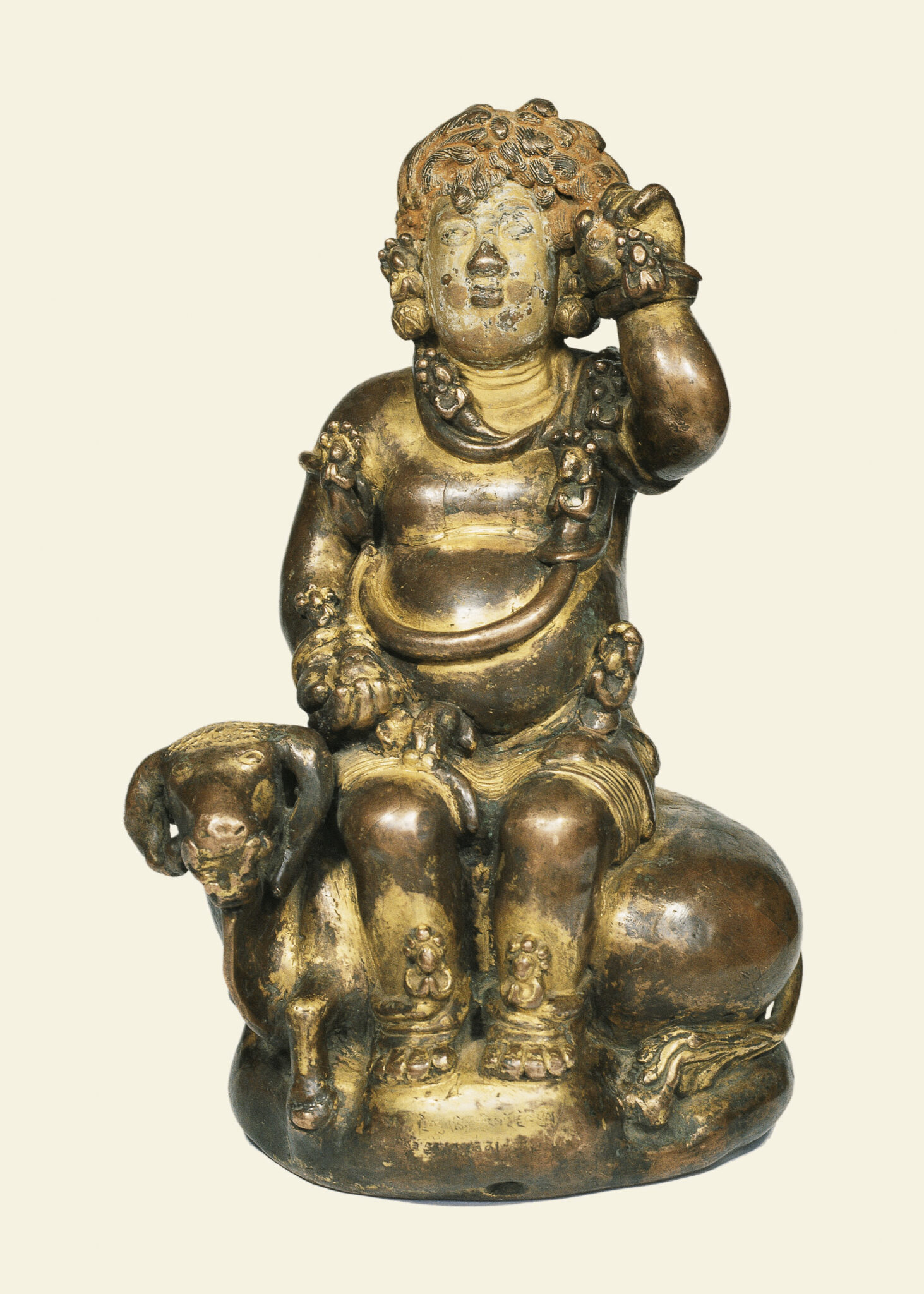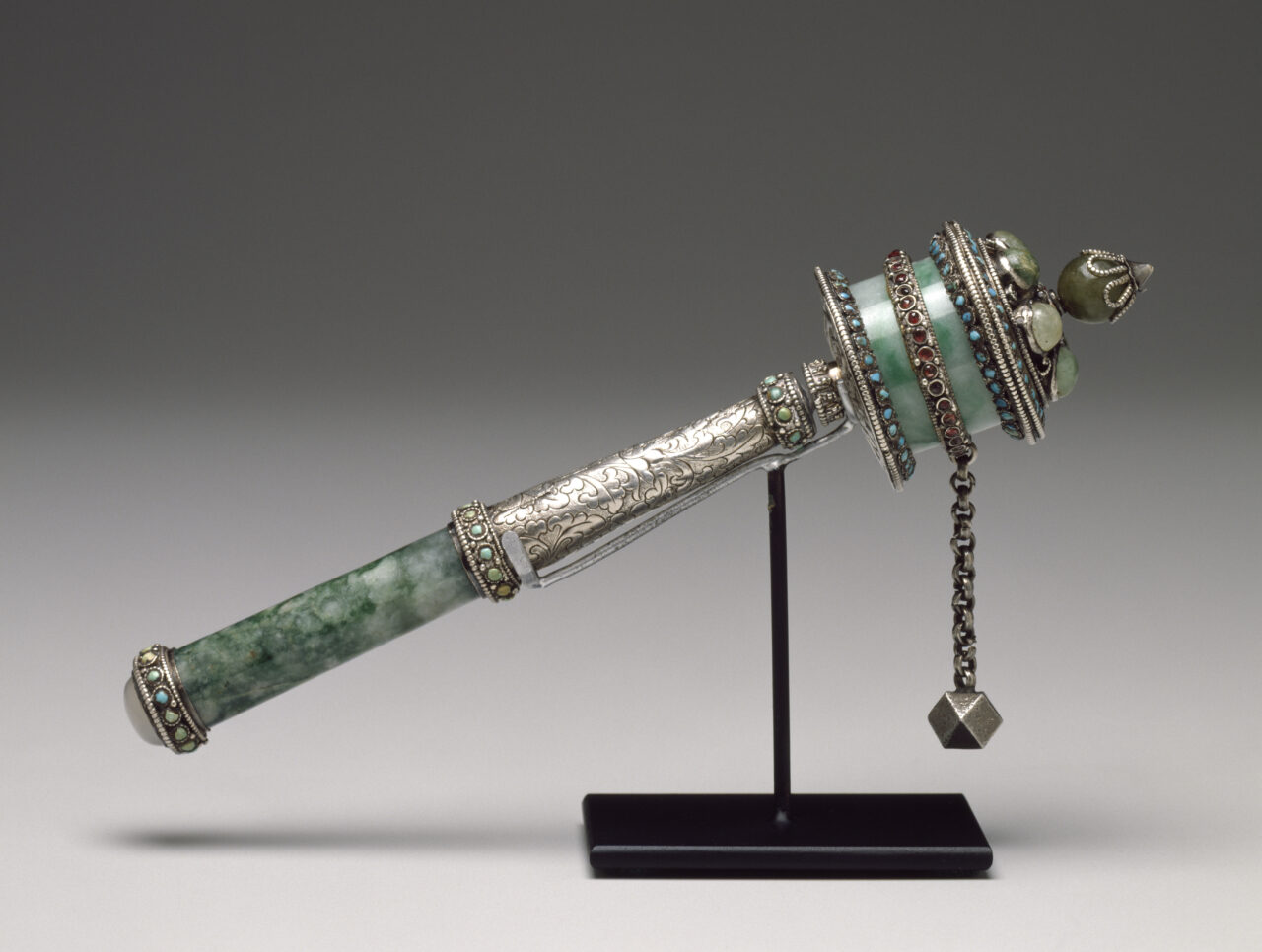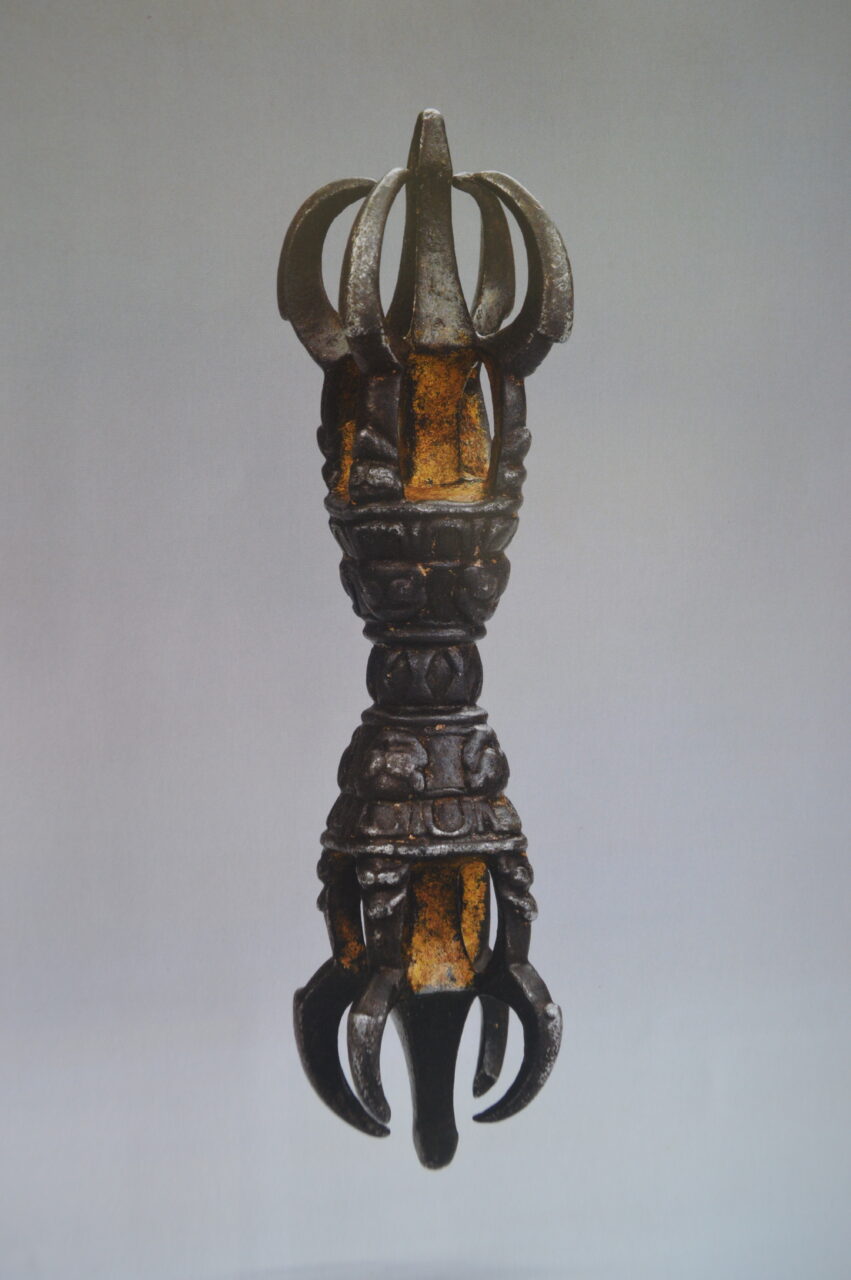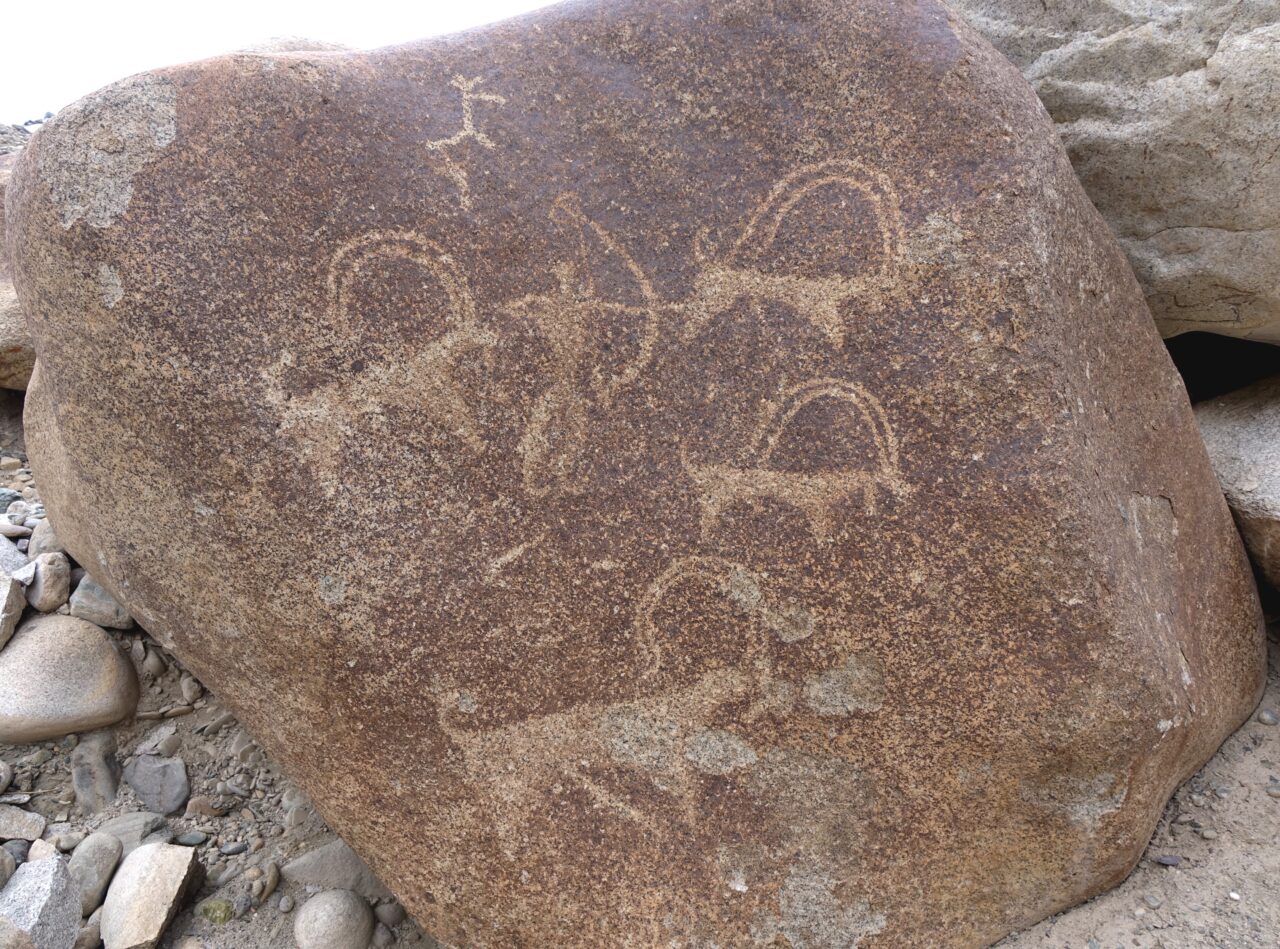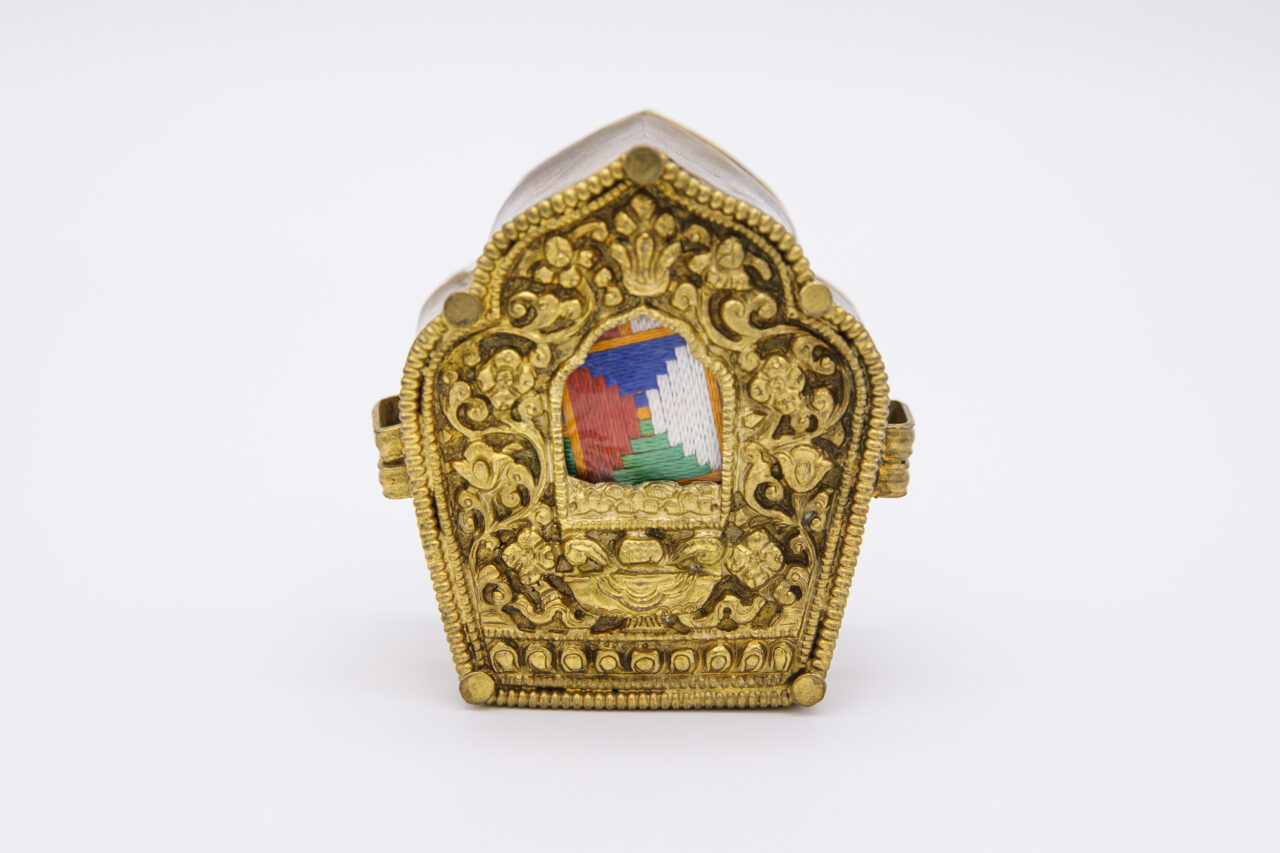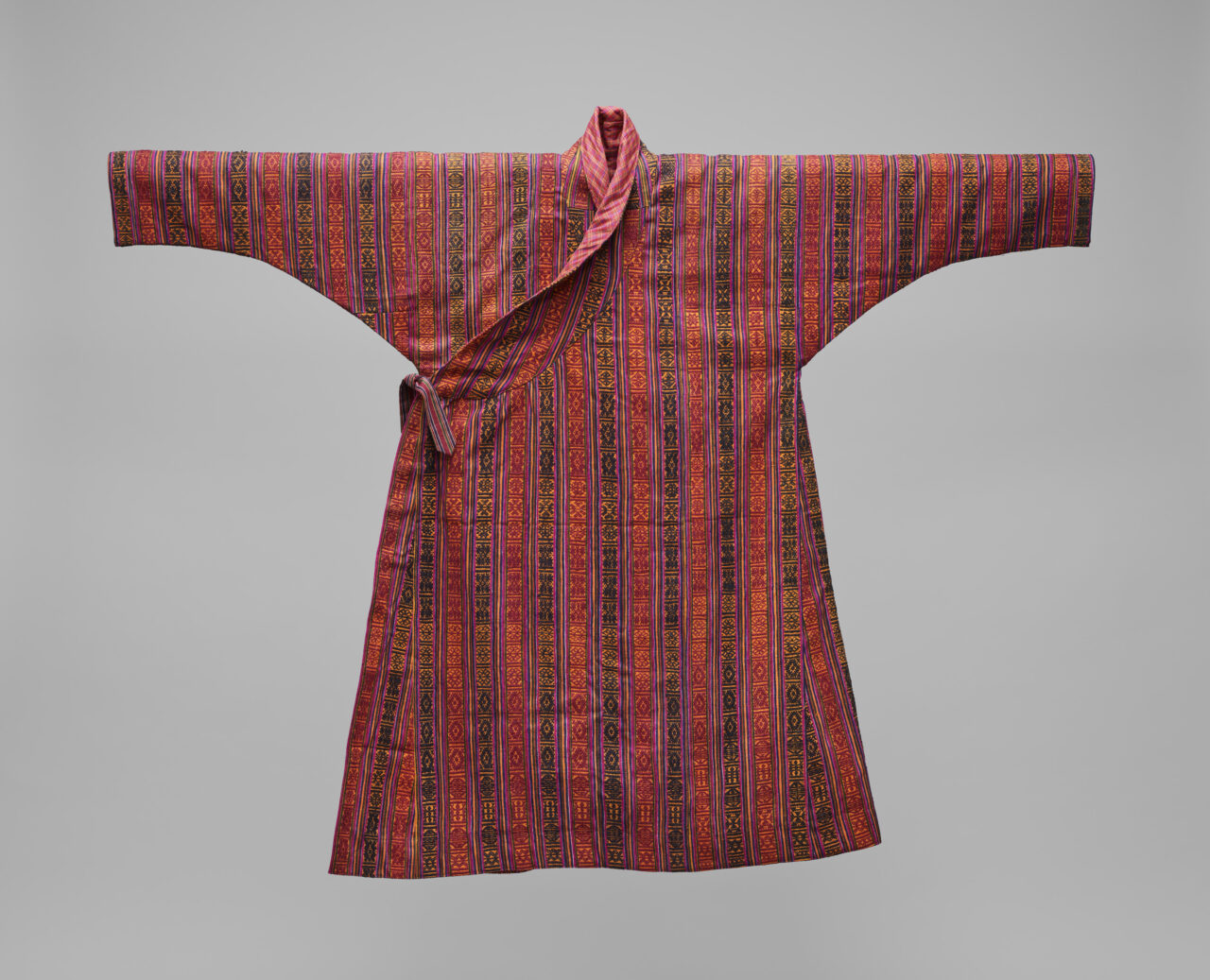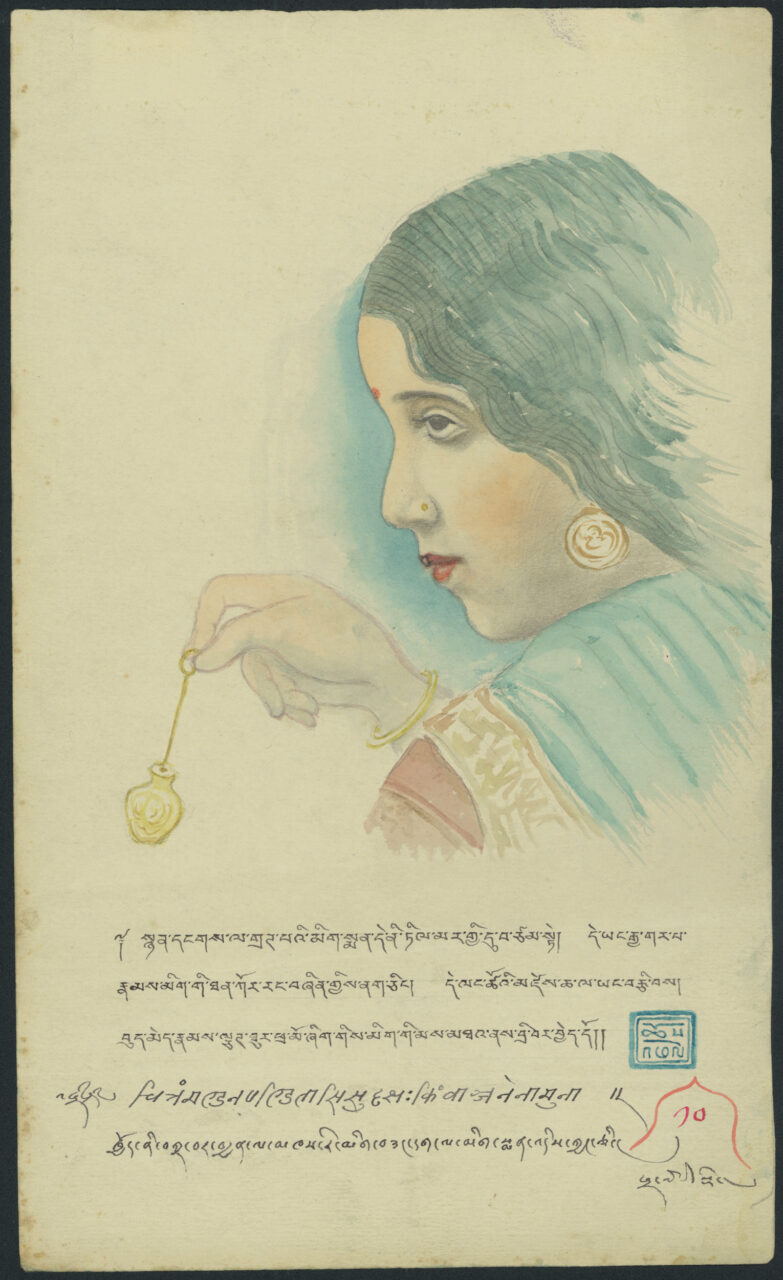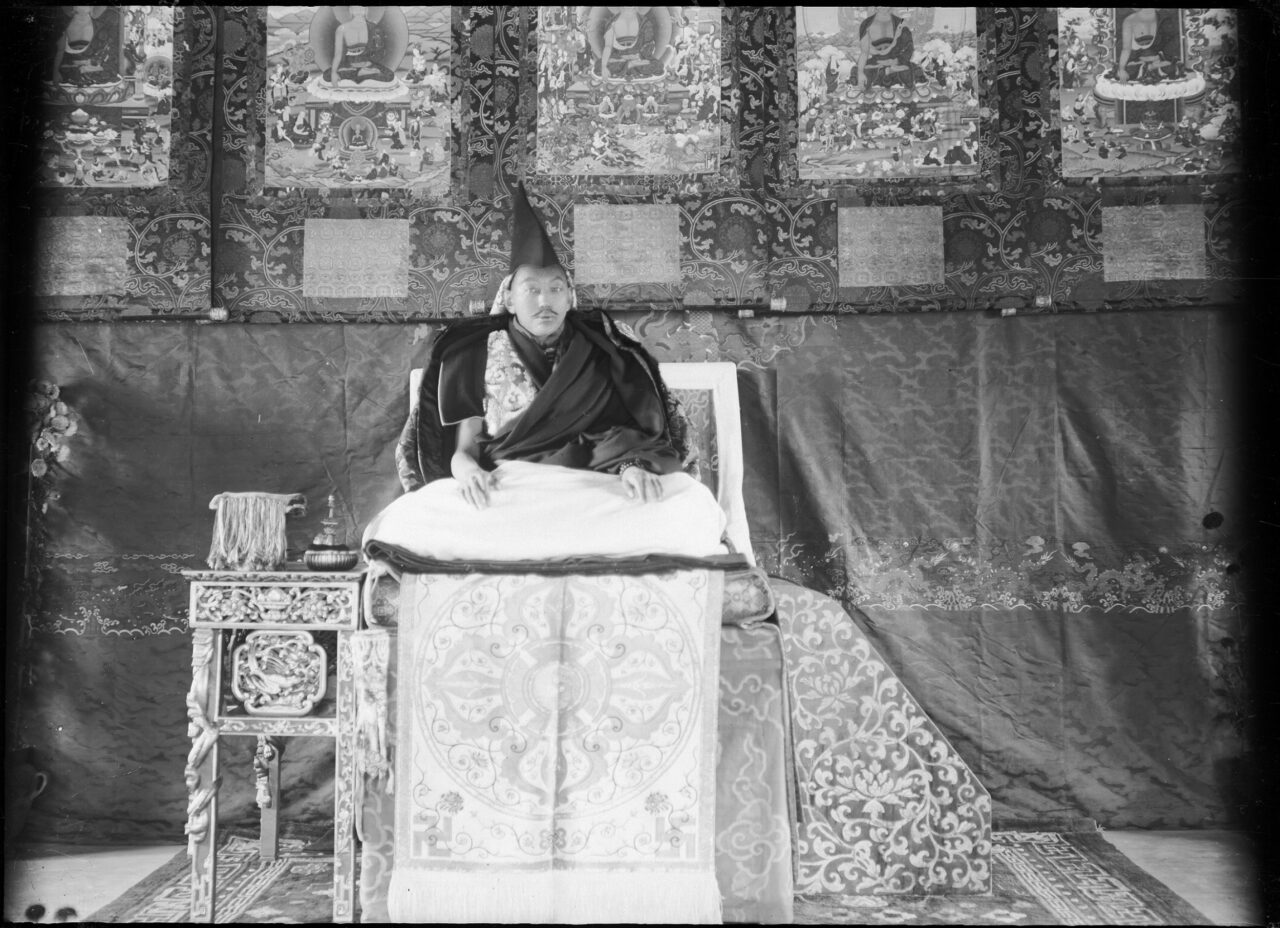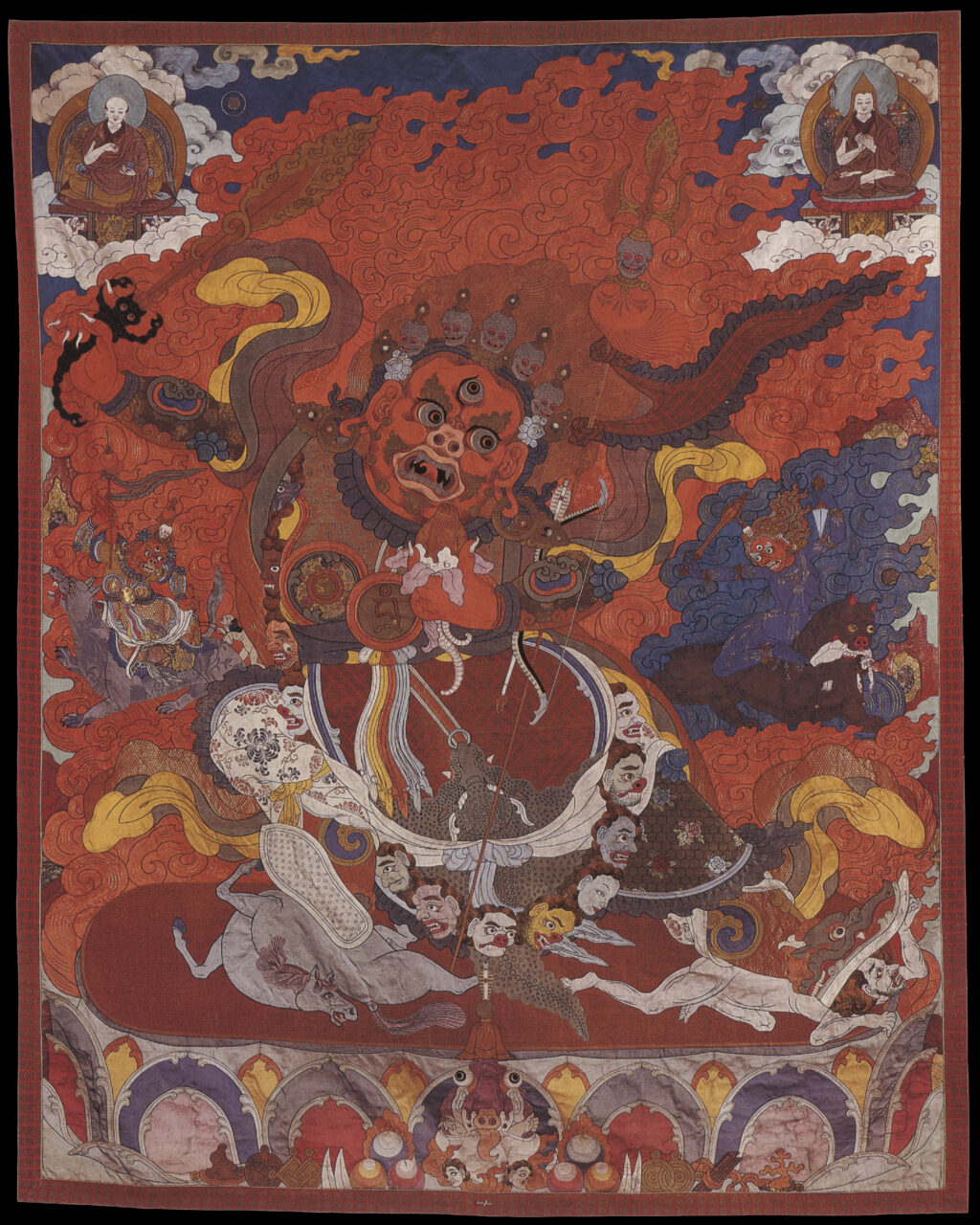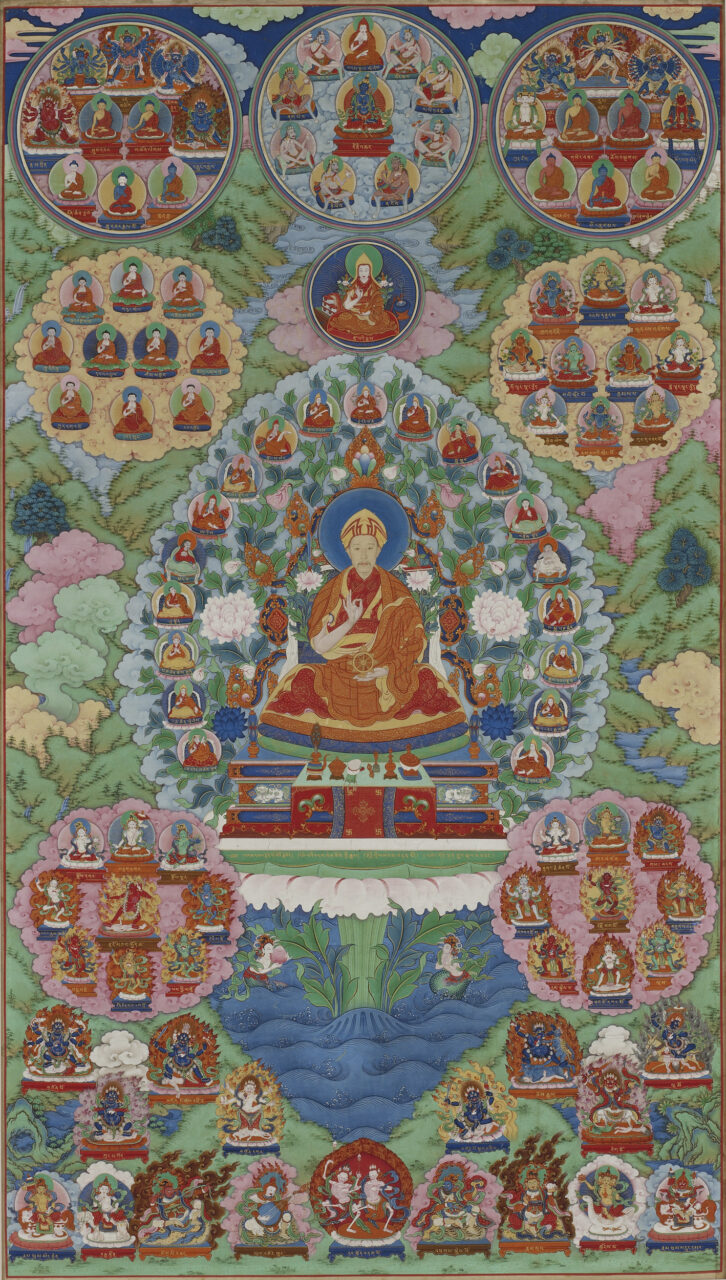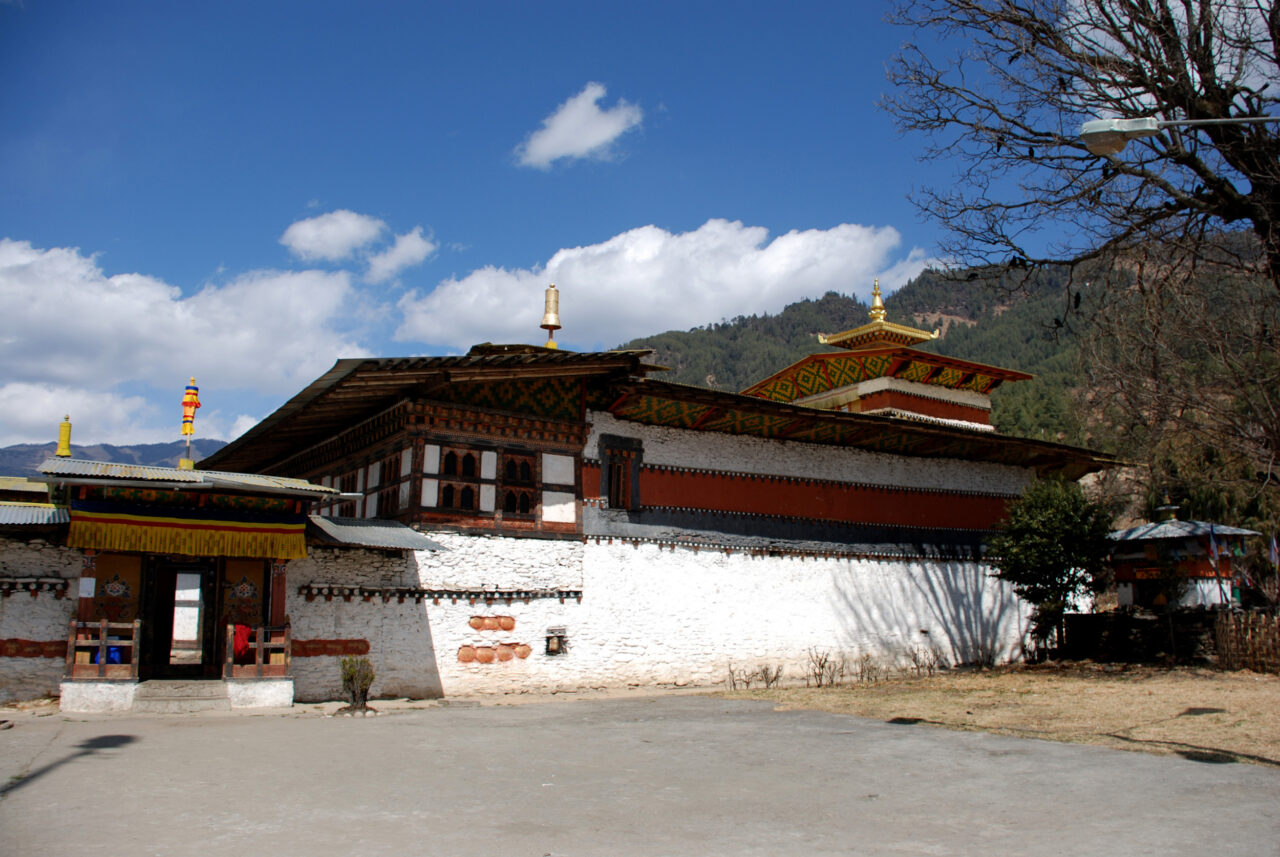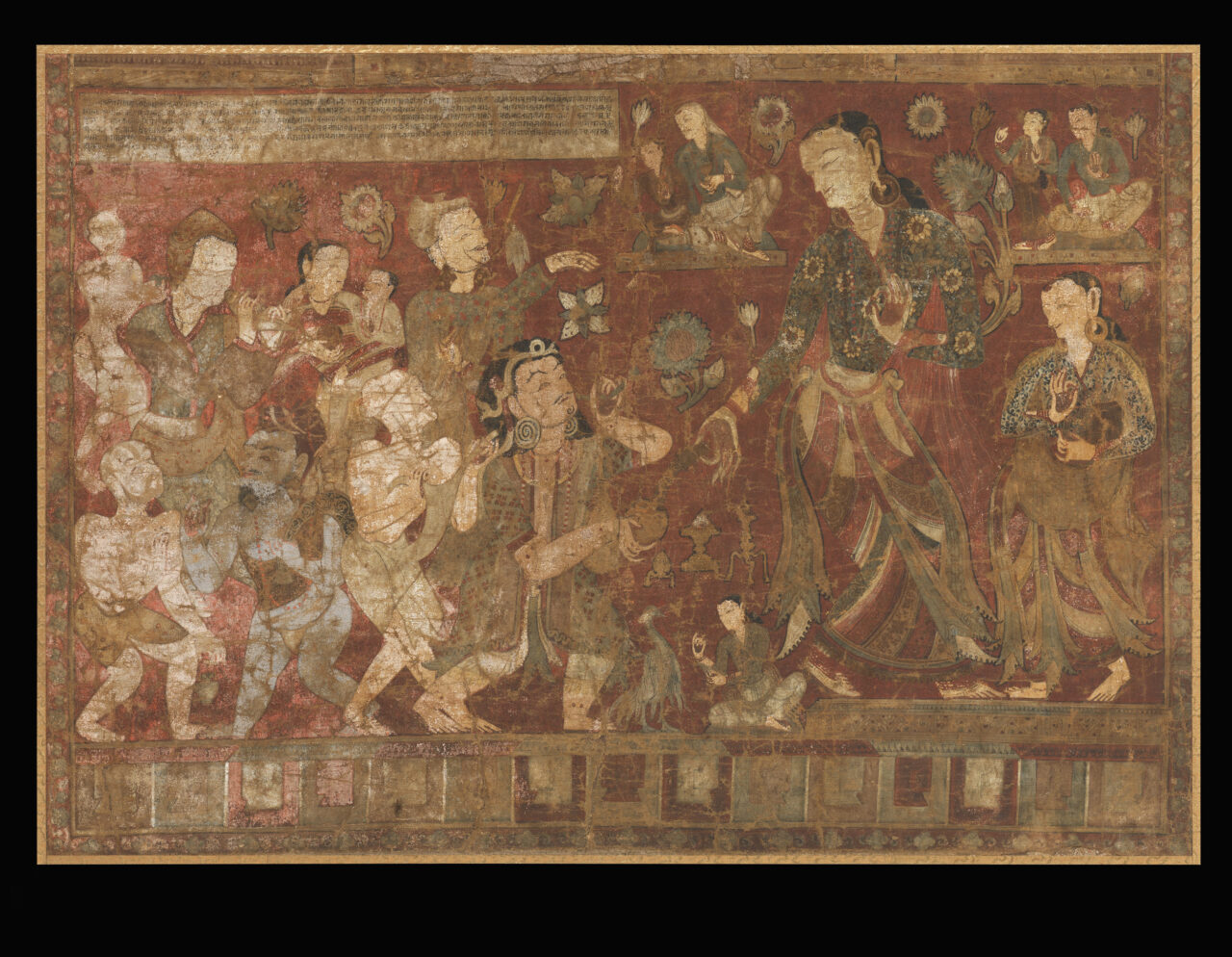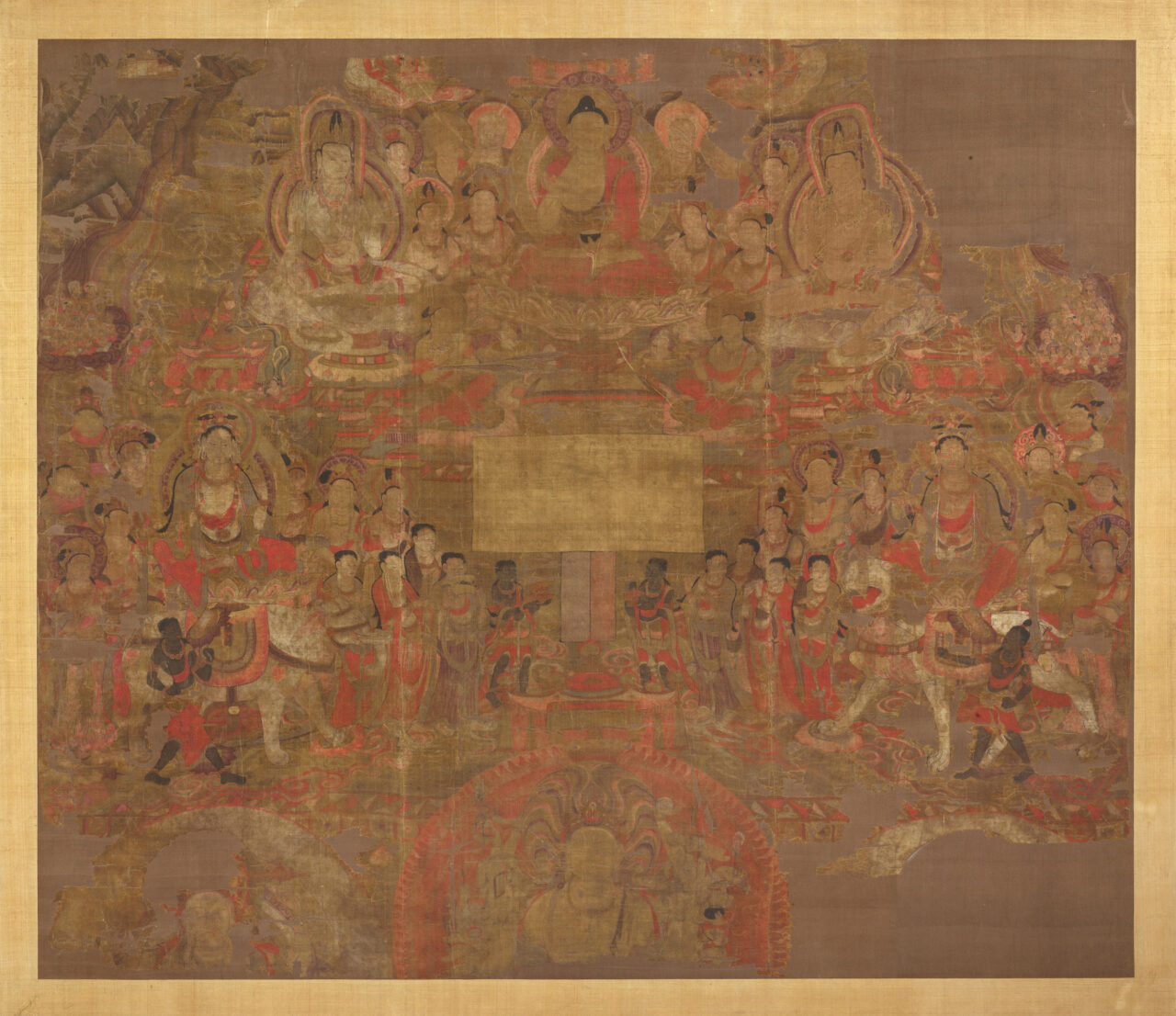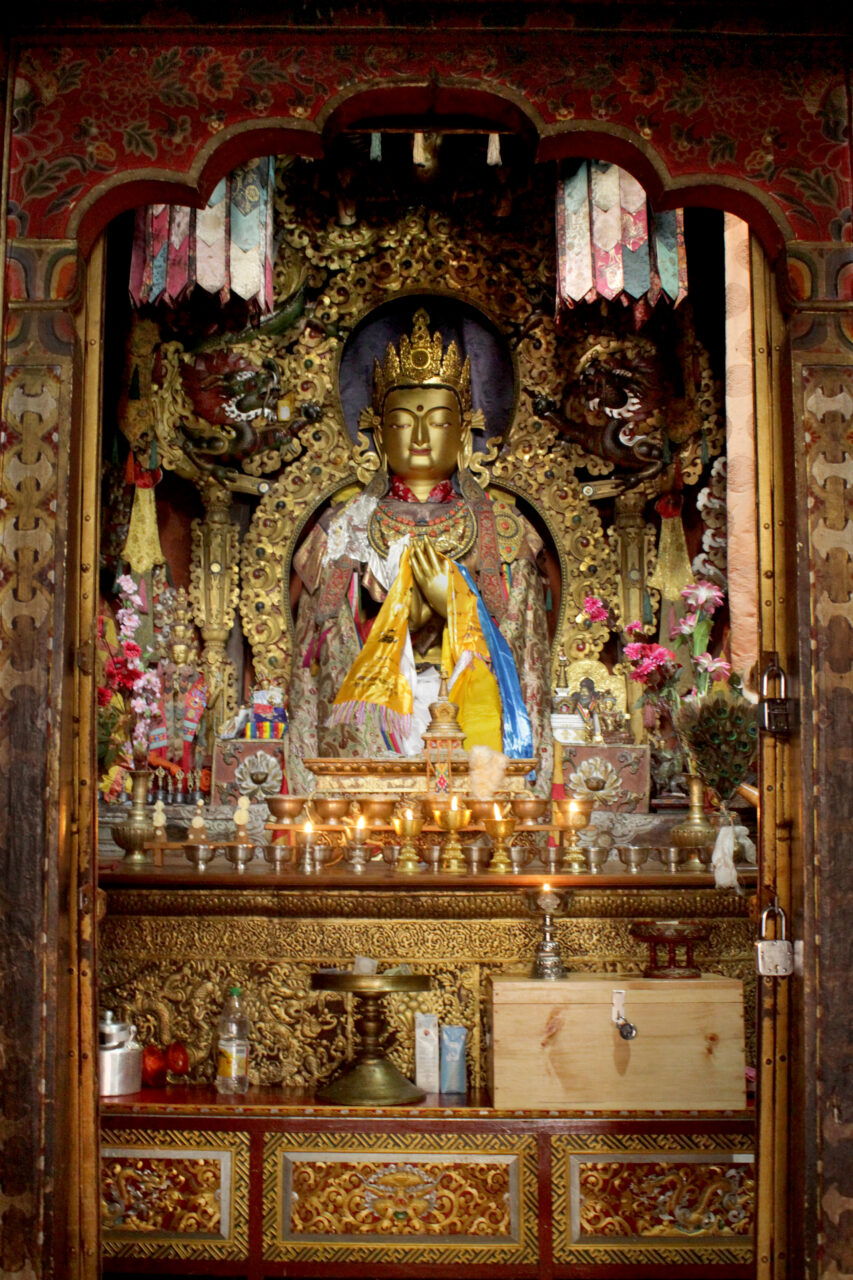In early Buddhism, arhats were those who had followed the path taught by the Buddha, and achieved release from the cycle of birth and death, or samsara. In later Mahayana traditions in China, the arhats were understood as a set group of disciples to the historical Buddha Shakyamuni, and an artistic tradition arose that depicted them as wizened sages with exaggerated features drawn from Daoist immortal imagery. Inspired by these Chinese paintings, Tibetan artists began to depict these figures in a genre that often carried with it aspects of Chinese artistic and material culture. In the Tibetan tradition they appear as a group of sixteen, representing the monastic ideal, and are invoked in rituals of confession and mending vows.
Avalokiteshvara, an embodiment of compassion, is a powerful bodhisattva, worshiped all across the Buddhist world. Avalokiteshvara is part of the very origin myth of the Tibetan people, and seen as the protector deity of Tibet. Many Tibetans believe that the emperor Songtsen Gampo, the Karmapas, and Dalai Lamas are all emanations of Avalokiteshvara. A special Avalokiteshvara image, the Pakpa Lokeshvara, is enshrined at the Potala Palace in Lhasa. In India and Tibet, Avalokiteshvara is understood as male, while in East Asian Buddhism, Avalokiteshvara is often thought of as female, and is known by the Chinese name Guanyin. Avalokiteshvara is recognizable in the Tibetan tradition by the lotus he holds, the image of Buddha Amitabha in his crown, and antelope skin over his shoulder.
Hindus and Buddhist believe that all beings die and are reborn in new bodies, or “incarnations.” While reincarnation is recognized across the Buddhist world, in the Tibetan Buddhist tradition, some important teachers (lamas) are thought to be able to control this process. Their successive incarnations, known as tulkus (emanation bodies), formed incarnation lineages such as Dalai Lamas, Panchen Lamas, Karmapas, and others.
The Kagyu are a major Later Diffusion tradition of Tibetan Buddhism. The Kagyu trace their lineages back to the Mahasiddhas, the great tantric masters of medieval India. The Kagyu are known for their yogic practices, as well as the teaching of Mahamudra, or the “Great Seal.” The Kagyu tradition includes many different branches, such as the Karma, Drukpa, Drigung, Tselpa, Pakmodru, and others. The most influential leaders of the Karma Kagyu are the Karmapas, a tulku lineage associated with that Kagyu branch. In Bhutan, the Drukpa Kagyu tradition serves as the state religion. A follower of the Kagyu is called a Kagyupa.
The Karmapas are a lineage of tulkus, or reincarnated lamas, and heads of the Karma Kagyu tradition of Tibetan Buddhism, recognizable by their distinctive black hats. They began tracing their reincarnations starting in the thirteenth century when Rangjung Dorje (1284–1339) recognized himself the reincarnation of two predecessors, to whom he gave the titles Second and First Karmapas. The Karmapas are thus the historically oldest tulku lineage in Tibetan Buddhism. The Karmapas were a major force in medieval Tibet, but their economic and political power was broken in the mid-seventeenth century when the Geluk-tradition Dalai Lamas and their Mongol allies defeated the king of Tsang and drove many Karma Kagyupas into exile. Nevertheless, the Karmapa lineage survived, and remains influential today. The Karmapas are believed to be emanations of the bodhisattva Avalokiteshvara.




